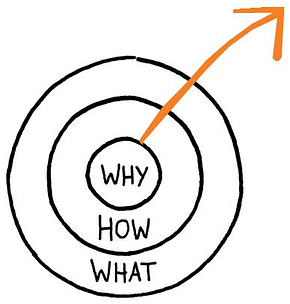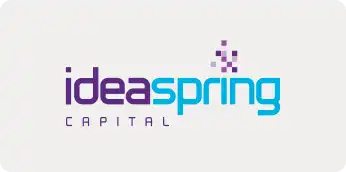People ask me to predict the future, when all I want to do is prevent it. Better yet, build it. Predicting the future is much too easy, anyway. You look at the people around you, the street you stand on, the visible air you breathe, and predict more of the same. To hell with more. I want better.” ~ Ray Bradbury, from Beyond 1984: The People Machines
Ray Bradbury one of the greatest science fiction writers of all times was absolutely right. We need to collectively build the future. I often have found listening to the leaders, managers & folks who have been building startups, been there, done that, and crossed the chasm immensely cathartic. It’s like the Netflix gem Dark, wherein you are looking at our best version in the future who embodies the wisdom & traits of these leaders of today. That’s my feeling listening to the early warm morning on Saturday, 24th July to STS Prasad.
So, SaaSBoomi Build definitely started with a bang. It was the first session kicked off by STS Prasad — SVP @ Freshworks. Looking at his LinkedIn profile is a dream career for every technical leader in making. With VP & CTO level stints at Walmart Labs, Kosmix, Aventeon & now leading engineering teams at Freshworks, it seems he has built & run engineering teams in major part of his career as an engineering leader.
As heading Product Innovation & Engineering myself at a fast-growing startup I take this opportunity to distil my thoughts from this 45 minutes of pure bliss.
Here are my list of the top 8 key takeaways from the session titled — Building Winning Teams by STS Prasad.
1/8 — Setting the context of the session
The core objective of the session was to deep dive into the minds of a savant engineering leader who built one of the largest SaaS engineering teams. More to understand what goes into building a product-focused team, guiding mental models for decisions, the ideal team structure at scale, hiring hacks for building your engineering leadership.
2/8 The Journey to the future
STS kicked off by painting the journey for all those present. He showed the audience the importance of different engineering motions during the journey of building the company as a function of the SaaS revenue. The groundwork starts as its inception.
The mental frameworks, product needs, engineering capabilities & build to scale starts at an early stage when the SaaS startup has proven product-market fit.
More about Product Market Fit here
3/8 The daunting present challenges us

STS started laying out the current state of majority SaaS engineering teams. He mentioned that more than often in the early days, the customer segments pull the engineering motions & priorities in different directions. This then further leads to recurring customer issues surfacing like a hydra. Teams face non-functional challenges of performance & reliability often overlooked while writing code. Like a domino effect this leads to unpredictable releases & fragmented developer time.
The teams want to move fast & break things! However, they can’t do this systematically. This is not how it manifests as teams are mostly functional silos of the front end, back end, QA & Dev-Ops etc.
According to STS this status quo is a familiar story at most of the early & mid stage SaaS engineering teams so a self reflection was the first thing STS did to set the stage.
4/8 Enter culture, committing to the business strategy & looking beyond engineering

Simon Sinek would have been proud. In his seminal book Start with Why Sinek argues that inspiration is the more powerful and sustainable than manipulation.
People & teams are inspired by a sense of purpose (or “Why”), and that this should come first when communicating, before “How” and “What”. Its like this triad the golden circle, a diagram of a bullseye (or concentric circles or onion diagram) with “Why” in the innermost circle.

STS mentioned that staying true to your SaaS product identity is supercritical & should be over-communicated to the entire team so they understand the purpose.
For engineering leaders, a SaaS multi-tenant architecture is not only an engineering decision but also a business strategy call. Think about all the big enterprise deal which warrants an on-premise deployment we all get lured to. STS emphasized on 3 key cultural principles :
- Define what are the guiding principles for decisions? Think all tactical & strategic decisions.
- What should an engineer expect when they join you? Think ramp-up.
- What has brought you to where you are today? Think to move from old debt-ridden codebase to new frameworks.
According to STS once the team embodies these core cultural tenets, strategy & decision frameworks they are ready for growth.
5/8 Planning, Sizing & getting the right team mix
We all were hungry for ratios & numbers. How big should be our engineering team? Are we overstaffed or understaffed? STS did not disappoint us. He clearly laid out a heuristic of how to think about the size of your teams as a function of your stage.
An important point to note was that STS was being prescriptive on the number of engineers/ratios. This was not a rule but a way to think about the balance.
- At $1M ARR — 15–18 is a good engineering team strength
- Making sure its a combination of not only engineering but also Product Management & UX design is supercritical.
- For every 6 engineers have 1 product manager & UX each. That’s the sweet spot.
- At $10M ARR — Aiming to be at ~80 members is a good balance.
- Never underestimate the importance of QA hiring, a good balance is 1 QA for every 3 Devs. This helps to avoid technical debt at an early stage.
According to STS one of the key things to look as an engineering leader was be wary of over-specialisation. You need flexibility, ability to wear multiple hats & be thriving amidst change constantly.
6/8 Hiring for the long term — The Achilles heal

STS started this topic by mentioning that every engineer you ever hire should have something special about themselves. Think of being of a hacker mentality, participation in code contests & hacker ranks, credible GitHub contributions & moreover bundled with enthusiasm.
He emphasised on a balance between curiosity to learn new technologies along with empathy for the end-users. This empathy drives solving customer issues which even demands to burn the midnight oil consistently during the early days.
STS mentioned that optimising for energy, technical curiosity & making sure that soft areas like scalability, performance & infrastructure are also embedded as core non-functional areas should be part of the on boarding, training & code practices.
7/8 Building the Future — Playbooks for Engineering Leaders
STS emphasised on the fact that one of the most important aspects for the success of engineering leaders in a SaaS product set-up is their camaraderie with their product counterparts.
It takes two to tango, product managers & engineering leaders synergise to deliver product value at scale. Few key traits of good engineering leaders are:
- Hands-on — are builders & coders. They write test cases, solve problems, code & lead by example
- Take quick decisions & are cognizant of technical debt quotient. Work with constraints and push the boundary of quality & scalability.
- They are true team players, avoid being territorial and handling group dynamics well.
- Consistently focus on hiring & retaining good talent
- Own the ever-evolving robust & scalable technical architecture.
STS made clear that one of the traits that separates the boys from the men was the innate ability of engineering leaders to coach & be players at the same time.
8/8 Final Words: Start building your future today

It was a revelatory 45 minutes of pure engineering bliss. The words & themes of Culture, Business, Empathy, Curiosity, Quality, Engineering Chops, Scalable Architecture & Coaching resonated with all the engineering leaders present.
I for one was glued to my screens for the 45 mins.

























